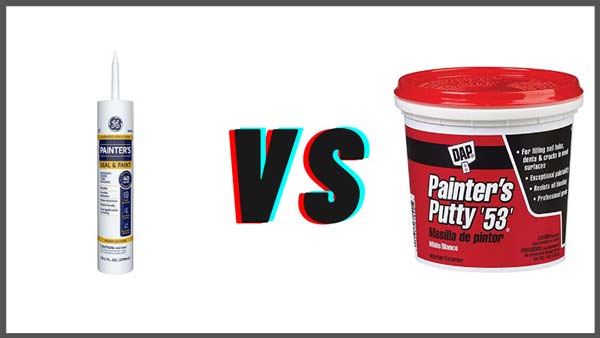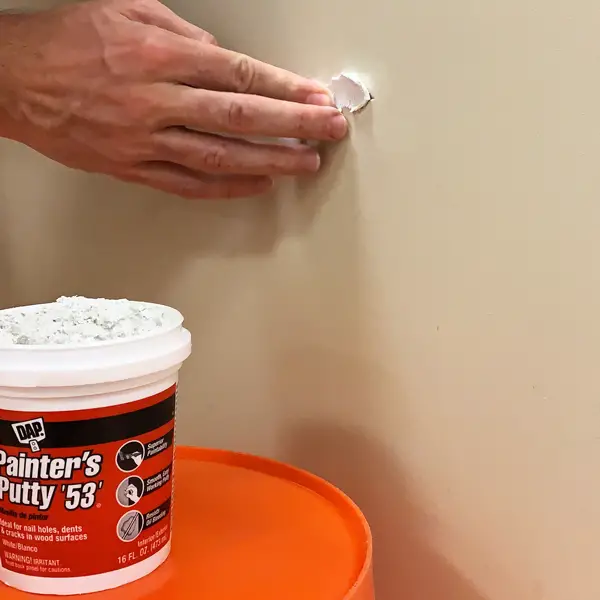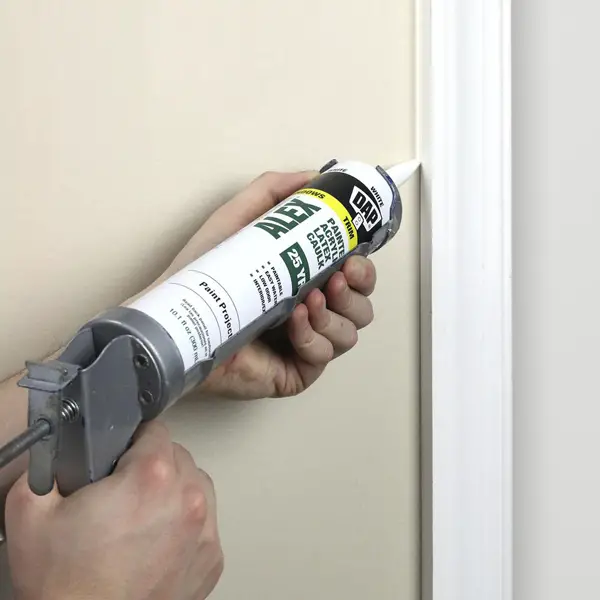Both putty and caulk are two of the most important parts that a painter has to work with. Though some people use these terms interchangeably, there are quite a lot of differences when it’s painter’s putty vs caulk.
From the looks, both may seem similar. And they do nearly the same things, too – filling cracks. The way of application and consistency of them aren’t so different too.

But still, there are some important differences there. In this guide, we’ll talk about all the important bits of differences between these two.
Before diving into their differences, let’s spend some time understanding the basics of both putty and caulk.
Table of Contents
Putty
First of all, don’t confuse this with the typical putty that housing contractors use for maintenance works. Painter’s putty or paint putty is a different type of putty that only painters use to smooth up a wall’s surface before applying the final color on it.
Without using putty, it’s nearly impossible to create a level painting surface on a wall. Almost all walls have some kinds of defects.
There’ll be dents, holes from electrical line connections, and whatnot. It’s highly unlikely that a wall stays smooth after being used for some time.

That’s where the putty comes into play. You can whip up a putty mix in a matter of minutes and apply it to the uneven areas on your wall. Let it dry for a few hours, and it’s good for years to come. You can then do whatever you want with the wall. Painting, designing – anything you want, your wall is ready for it.
It’s possible to use cement instead of putty for evening the dents. But it’s not practical always, nor is it a quick process.
Preparing cement takes some time and extra bowls that will get damaged after you mix cement in it. Whereas putty mixing takes hardly some time. It hardens quickly, too, unlike cement does.
Caulk
Caulk looks almost similar to putty and can be replaced for putty in many cases. But caulk does its work best in small holes rather than large ones. Caulk is more used for waterproofing areas. Walls in the bathroom tend to get moldy, and using caulk can save that.

But you should be careful while using caulks as they can dry up more than putty. It’s a good idea to use less water while mixing caulk, so that it won’t shrink much once it has dried up completely.
Painter’s Putty vs Caulk
Now that we’ve had some basic ideas on these two. Let’s talk about some of their major differences below –
Work
Putty has more widespread uses than caulk. For example, you can use putty with woods, hard walls, or any surface you can think of. On the other hand, you can only use caulk in drywalls, metal roof, exterior cedar siding, toilets, and fill gaps in small holes.
Flexibility
Putty is more flexible to work with. You can remove a putty even after it has dried up to some extent and mix it up with water to create a different consistency.
But this isn’t how caulk works. You can’t remove caulk after application as it hardens quickly and becomes a thick, strong solid once it has dried up completely.
Materials
Putty is made of silicone and some mixture of plaster-related components. On the other hand, caulk is made up of a calcium-based chemical mixture.
Preparation Time
Putty and caulk both can be created into an applicable mixture in a short time, but they vary in their application times. You can make a putty mix and immediately start applying it to the wall. It dries up quickly, so you won’t have to wait for long before painting on it.
But if you’re using caulk, then the steps aren’t so simple. Caulk needs some time to prepare itself as a good painting surface. But once it dries up, you can apply paint in the same style you would do if you were working with putty.
Final Words
If you were confused about the difference in painter’s putty vs caulk, you shouldn’t be anymore, after reading this guide.
Maybe you can understand that both of these can be used, at least in most cases, interchangeably. But should you do that?
If you’re working in drywalls or need to waterproof some wall portions, don’t use putty. For works like these, caulk is specially designed, and it performs very well. It does the work it was designed to effectively, and putty can’t be of much effectiveness in its place.
